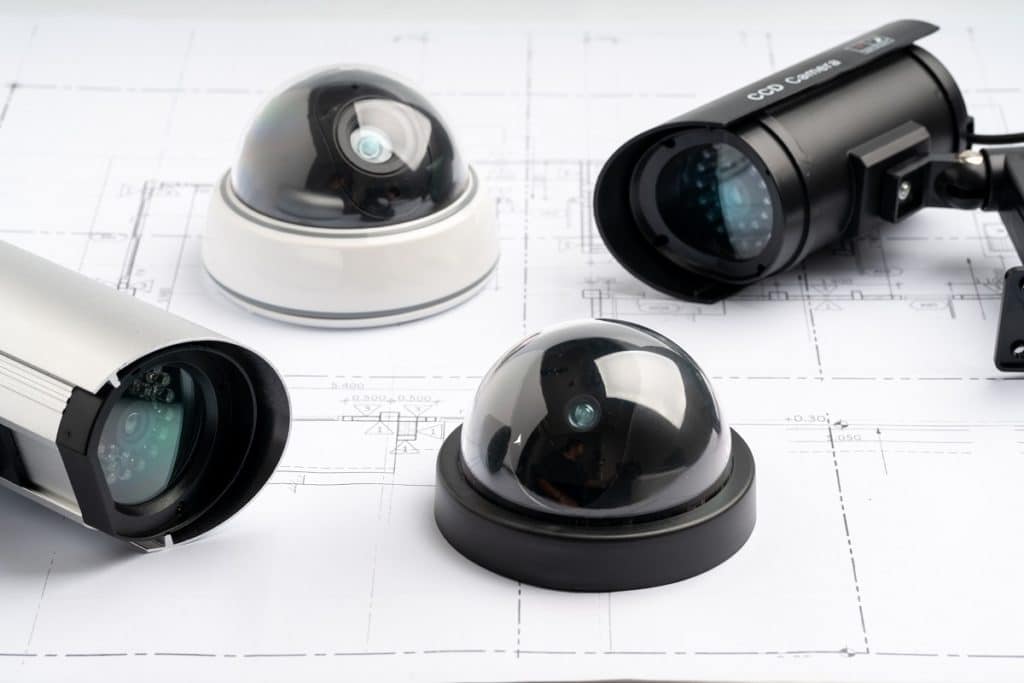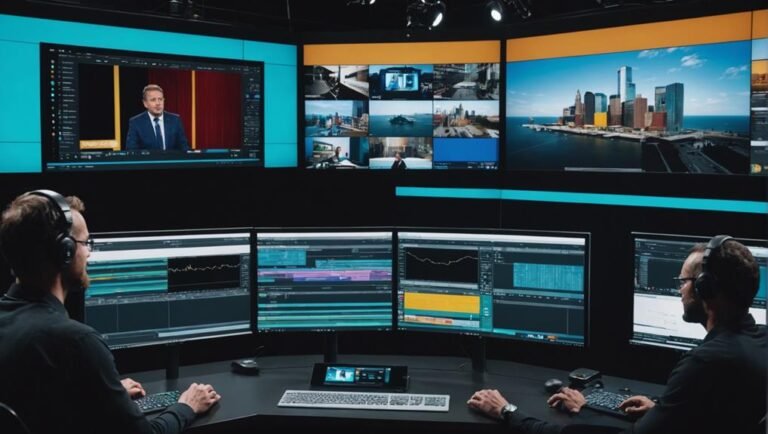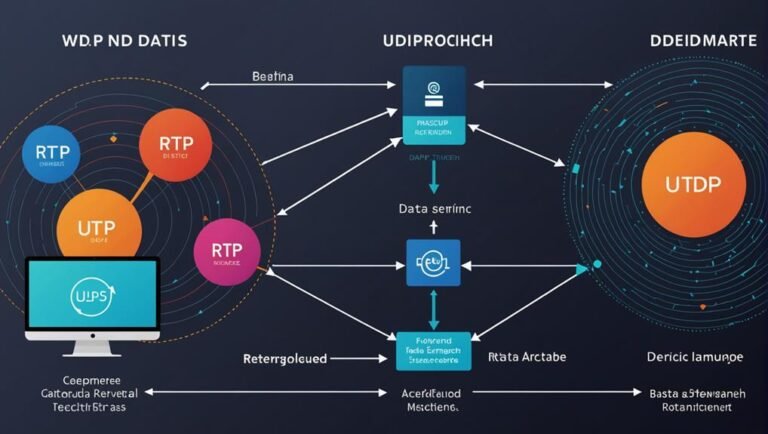Choosing between digital and analog CCTV impacts your security setup to a large extent. Digital CCTV offers high-resolution images, better low-light performance, and simpler installation with Power over Ethernet. You can easily manage and add cameras, and enjoy remote access from anywhere. Though costlier upfront, digital systems save money long-term with lower maintenance costs and better integration with smart home systems. In contrast, analog CCTV needs extensive cabling and lacks remote capabilities. Digital systems also offer scalable storage, automated updates, and robust security features like encryption. If you’re curious about specific advantages and installation tips, there’s more to explore.
Image Quality
When comparing digital CCTV to analog CCTV, the difference in image quality is immediately noticeable. With digital systems, you get crisp, high-resolution images that allow you to see fine details. Imagine being able to identify faces, license plates, and other critical details clearly and quickly. This clarity means you’re not tied down by blurry, indispensable footage that leaves you guessing.
Digital CCTV cameras offer higher pixel counts, which translates into better image quality. You’ll find that your recordings capture everything in stunning detail, giving you the freedom to zoom in without losing clarity. Conversely, analog systems often produce grainy, low-resolution images, making it challenging to discern important details.
Additionally, digital systems provide better performance in low-light conditions. You won’t have to worry about missing significant moments just because the lighting isn’t perfect. The advanced sensors in digital cameras adapt to various lighting situations, ensuring you always have a clear picture.
In a world where freedom and security go hand-in-hand, digital CCTV offers the image quality you need to feel confident and in control. You deserve the best, and digital CCTV delivers just that.
Installation Process
Switching from discussing image quality, let’s explore how the installation process differs between digital and analog CCTV systems. When installing an analog system, you’ll need to run a coaxial cable from each camera to a central recording device. This setup can be cumbersome, especially in larger properties where extensive wiring is required. Analog systems also demand power cables for each camera, adding to the complexity.
In contrast, digital CCTV systems often use IP (Internet Protocol) cameras, which transmit video over a network. This means you can leverage existing network infrastructure, such as Ethernet cables, making the installation far simpler. Many digital systems support Power over Ethernet (PoE), which supplies power and data through a single cable, reducing clutter and making the process more streamlined.
You’ll appreciate the flexibility digital systems offer. You can easily add or relocate cameras without reconfiguring extensive wiring. The setup can be managed remotely through software, giving you the freedom to monitor and adjust settings from anywhere. While setting up an analog system might feel like maneuvering through a maze of cables, a digital system provides a more user-friendly and adaptable solution, allowing you to install with ease and efficiency.
Cost Comparison
You’ll find that the initial cost of digital CCTV systems can be higher than analog systems, but the long-term savings may outweigh the upfront expense. With digital systems, you’re investing in advanced technology, higher resolution, and greater flexibility. While this may mean spending more upfront, consider the reduced need for additional equipment and lower maintenance costs down the line.
Analog systems might seem cheaper initially, but they often require more cabling and additional devices to achieve the same functionality as digital systems. This can add up quickly, especially if you need to cover a large area or upgrade the system later. Plus, analog systems tend to have higher ongoing maintenance costs, which can eat into any initial savings you might have thought you gained.
Digital systems offer remote access capabilities, enabling you to monitor your property from anywhere. This feature reduces the need for physical presence and associated costs. Additionally, digital systems often have better integration with modern security software, making updates and enhancements easier and less costly. So, while the upfront cost might be more, the freedom and long-term savings you gain with a digital CCTV system can offer significant value.
Storage Options
Digital and analog CCTV systems offer different storage options, each with its own set of advantages and limitations. With digital CCTV, you’re looking at network video recorders (NVRs), which store footage on hard drives or even in the cloud. This gives you the flexibility to scale your storage capacity easily. If you need more space, just add more drives or upgrade your cloud plan. Plus, accessing your footage is a breeze since everything is indexed and searchable.
Analog CCTV, on the other hand, relies on digital video recorders (DVRs) that store footage on internal hard drives. While this might seem straightforward, it’s not as scalable. You’re bound by the physical capacity of your DVR. If it’s full, you’ll need to either delete old footage or swap out drives. There’s also the issue of video quality; analog systems typically record lower-resolution footage, which means you’ll need less storage but at the cost of clarity.
Choosing between these options depends on your needs for flexibility and ease of access. If you value being able to expand and quickly retrieve specific footage, digital systems have the upper hand. Analog systems might appeal if you prefer simplicity and predictability.
Remote Access
One of the major advantages of modern CCTV systems is the ability to access footage remotely. Imagine being on a beach vacation, knowing you can still keep an eye on your home or business. Digital CCTV systems excel in providing you that freedom. With just a few taps on your smartphone or clicks on your laptop, you can check live feeds from anywhere in the world.
Here’s how remote access enhances your freedom:
- Instant Alerts: Receive real-time notifications whenever the system detects unusual activity. You don’t have to be glued to your screen; let the system alert you.
- Live Viewing: Watch live streaming of your property at any time. Whether you’re at work, traveling, or simply away from the area, you have constant eyes on what matters.
- Playback Flexibility: Access recorded footage on the go. You can quickly review past events without needing physical access to the storage device.
Analog systems, on the other hand, generally lack these remote capabilities. They require you to be physically present to monitor or retrieve footage, which limits your freedom and flexibility. Choosing a digital system means embracing a lifestyle unchained by location.
System Integration
Integrating your CCTV system with other security and smart home devices can greatly enhance overall functionality and convenience. With digital CCTV, you can seamlessly link your cameras to alarms, lighting systems, and even smart locks. Imagine your lights automatically turning on when motion is detected, or receiving instant alerts on your smartphone if any unusual activity occurs. This level of integration provides you with a complete security solution that adapts to your lifestyle.
Digital systems are designed to be highly compatible with various smart home platforms, making it easier to create a unified control center. You can monitor camera feeds, adjust settings, and manage other connected devices all from a single app. This simplifies your life and gives you the freedom to control your home security from anywhere.
Analog CCTV systems, on the other hand, are more limited in their integration capabilities. They often require additional converters and are usually not compatible with modern smart home ecosystems. If you’re looking for a system that offers flexibility and advanced features, digital CCTV is the way to go. It empowers you to take full control of your home security, offering peace of mind and the freedom to focus on what matters most.
Maintenance Requirements
When considering maintenance requirements, you’ll find that digital CCTV systems generally demand less frequent attention compared to their analog counterparts. This difference can be a game-changer, especially if you’re after a system that offers more freedom from constant upkeep.
First, digital systems often come with automated updates that guarantee your software stays current without manual intervention. You won’t have to worry about scheduling time for regular software upgrades.
Second, they provide remote diagnostics capabilities. This means that many issues can be identified and sometimes even resolved from a distance, reducing the need for physical site visits. Just imagine a technician fixing a problem while you sip coffee at home.
Third, digital systems usually use fewer moving parts. Unlike analog setups that rely on mechanical components like tapes or disks, digital systems are largely solid-state. This notably lowers the risk of hardware failures and extends the intervals between necessary maintenance checks.
Security Features
Digital CCTV systems offer robust security features that far surpass the capabilities of traditional analog setups. You’re not just getting a camera; you’re investing in advanced technology that keeps your space secure. Digital systems provide encryption, which guarantees that your footage can’t be tampered with or accessed by unauthorized individuals. Analog systems? They’re easier to hack and don’t offer the same level of protection.
Moreover, digital CCTV allows for remote monitoring. You can check in on your property from anywhere in the world using your smartphone or computer. This isn’t possible with analog systems unless you’ve got additional, often costly, equipment.
Let’s break it down:
| Feature | Digital CCTV | Analog CCTV |
|---|---|---|
| Encryption | Yes | No |
| Remote Monitoring | Yes | Limited or No |
| Tamper Detection | Advanced | Basic |
| Storage Options | Cloud, Local, Hybrid | Mostly Local |
Digital systems also come with advanced tamper detection. If someone tries to mess with your camera, you’ll get an instant alert. Analog systems might not even notice. Plus, with flexible storage options like cloud or hybrid solutions, you’re not tied down to just local storage. Embrace the freedom and security that digital CCTV offers.
Frequently Asked Questions
How Does Weather Impact Digital and Analog CCTV Performance?
Imagine you’re on the Oregon Trail. Weather impacts CCTV by reducing visibility and introducing signal interference. Rain, snow, and fog can blur images, while extreme temperatures might affect the equipment’s performance. Stay vigilant, and maintain your freedom!
Are There Any Significant Differences in Lifespan Between Digital and Analog CCTV Systems?
You’ll find digital CCTV systems generally have a longer lifespan than analog ones. Digital systems offer advanced technology and easier upgrades, meaning they stay relevant longer, giving you more flexibility and freedom in your security setup.
Can Digital and Analog CCTV Systems Be Upgraded Easily?
Why feel stuck with outdated tech? Upgrading digital CCTV systems is usually easier, involving software updates and compatible hardware. Analog systems, however, often need complete overhauls. Don’t you want the freedom of a smoother upgrade path?
What Are the Power Consumption Differences Between Digital and Analog Cctv?
You’ll find that digital CCTV systems usually consume more power than analog ones due to their advanced features and higher resolution. However, the energy difference isn’t huge, so you can still enjoy flexibility without skyrocketing bills.
How Do Digital and Analog CCTV Systems Handle Low-Light Conditions?
When the night blankets your surroundings, digital CCTV systems often outperform analog ones in low-light conditions. They’ve got advanced features like infrared and low-light sensors that guarantee clear images, keeping your space secure around the clock.



